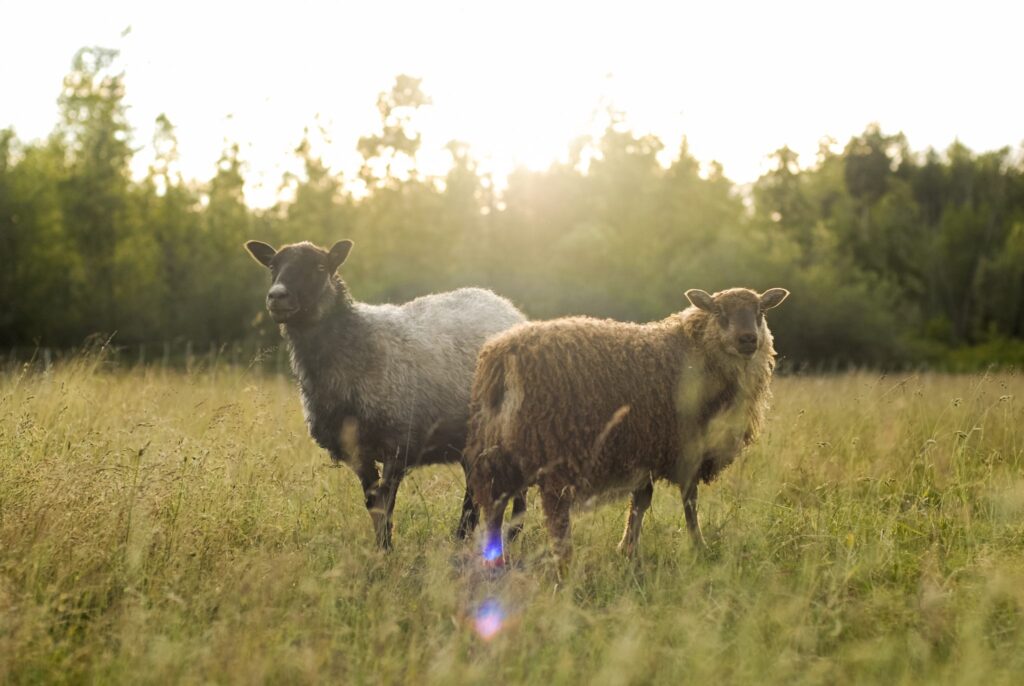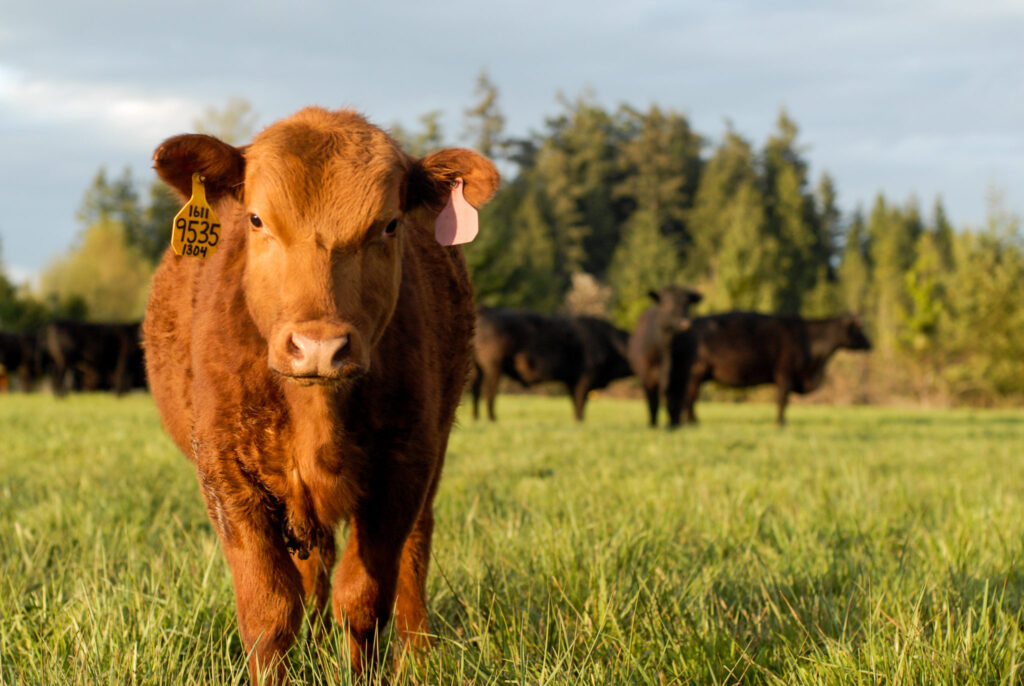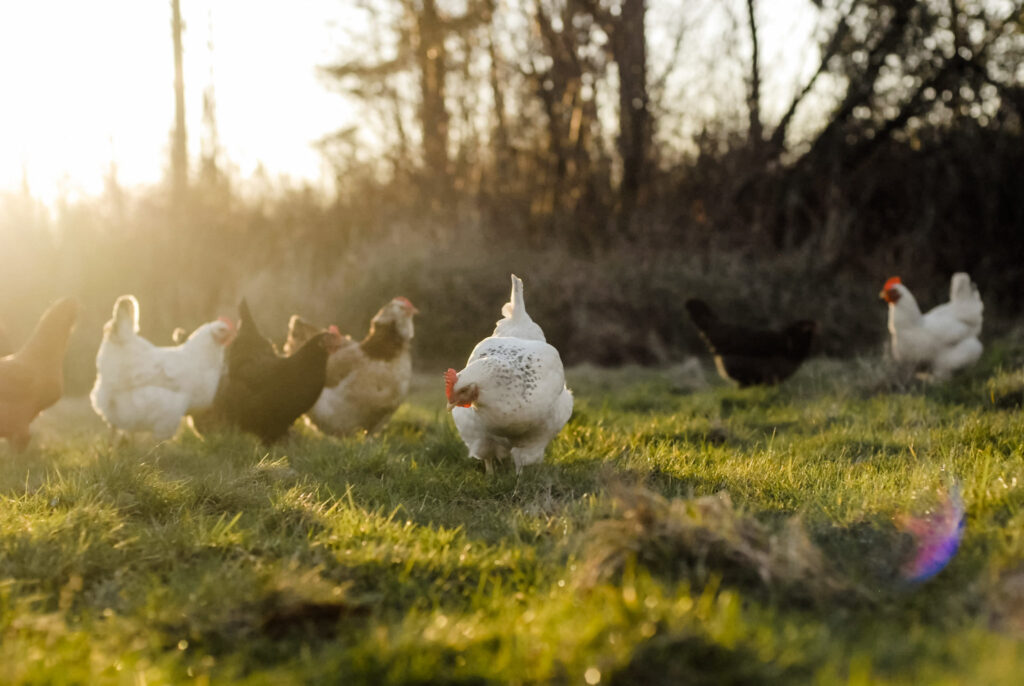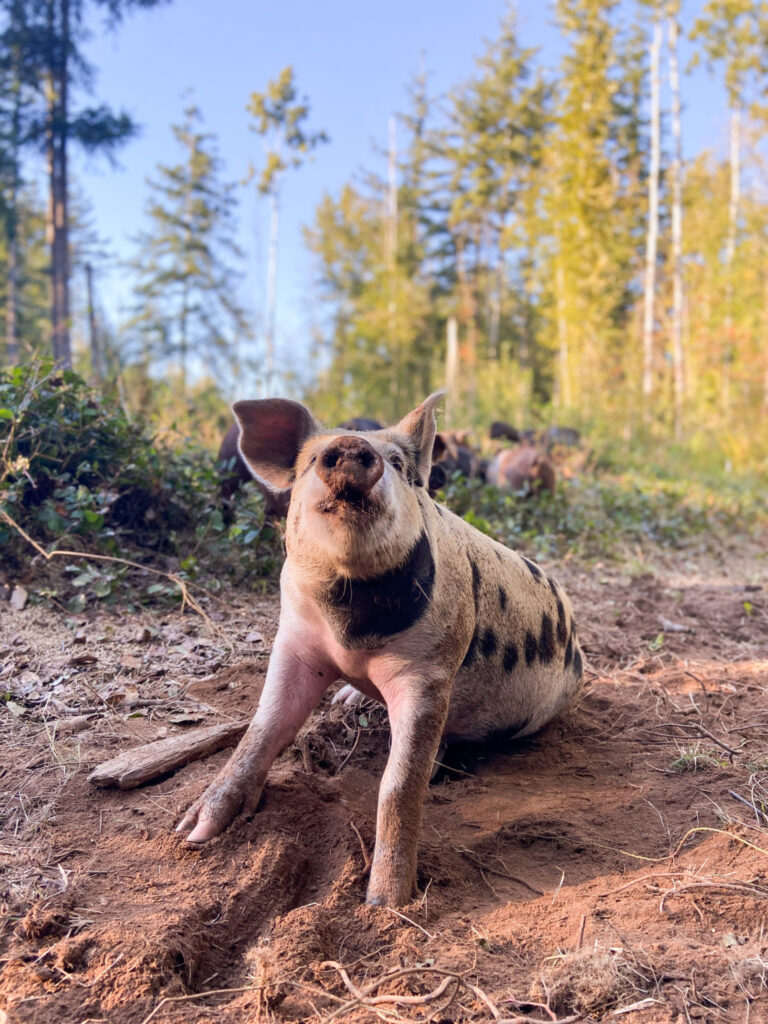
I often say that we are soil farmers and when I do I sometimes get funny looks. But it’s true! At the heart of all that we do is a commitment to making sure that we continually regenerate the land we farm on while producing the healthiest, most ethical and sustainably raised meats.
Soil regeneration is the key component of what’s called regenerative agriculture and it’s something we’ve been continually working to hone and refine. It’s definitely not a process that can be rushed, as the results from building up soil to capture carbon can take years to even become evident.
Recently we were incredibly fortunate to receive a grant from our local conservation district to help us further our regenerative efforts and protect the creek that winds through our property, the salmon that run in it, and the watershed that the creek feeds into. Run off from our pastures is the biggest threat to the health of the water and contamination from the manure can cause local species to die off and water quality to severely deteriorate. This is especially exacerbated in the wet winter season. With that in mind, the best way we can combat this is to carefully monitor our climate and time our grazing season to match to cause the least amount of damage to the pastures.
An important thing to note: This is what works for us based on our farm’s needs and our location. Regenerative agriculture isn’t one size fits all; what works for us might not work for someone on another piece of property just a few miles from us let alone another part of the country!
In fact, because of our climate we have to remove livestock (specifically our sheep and cattle) from the pastures entirely during the winter and during that time we utilize barns and feed hay in raised feeders to avoid contamination. We are lucky in that our barns came equipped with an advanced manure collection system when we moved in last year. Underneath the floor of the barns are pits that house massive tanks that can hold all the manure that we scrape each day. This manure is then stirred together with rain water collected from the barn gutters to create a slurry that can then be pumped into a man-made lagoon on the property. From there, it can be sprayed onto pastures to create a sustainable fertilizer!

Once winter has run its course, our sheep are the first to be able to go back out on pasture, usually around mid-April after lambing season is over, through November. Their light footedness allows them to graze without causing soil disruption which means they can be out on pasture earlier and longer. We also practice rotational grazing in that the flock is moved every 3-4 days to allow for grazed parts of the pasture to rest and regrow. As the sheep graze during these spring months they gravitate to the tall stalks of grass and leave what’s lower down to both grow back quickly and for the soil to dry out for the cattle to eventually be turned out.
In comparison to the sheep, our cattle grazing season is much shorter since they’re heavy footed and would cause significant damage to the damp and vulnerable soil. We wait until the soil is sufficiently dry before allowing them to rotationally graze and take them off at the first appearance of dampness.

Though our chickens and pigs aren’t grazing in the same way as the sheep and cattle, they both still play an important role. Our chickens follow behind our cattle by about two days and pick through the cow patties, eating any flies and fly larvae they encounter along the way which has been an extremely effective means of parasite control. Meanwhile, our pigs move around the wooded area they reside in and eat up non-native blackberry bushes to make way for native grasses and forages to grow in their place. Our wooded area has been dramatically restored for the better thanks to their efforts!

I hope this has shed some light on the ways that we work diligently each day to better the land and our livestock. Be on the look out for more in-depth posts about our regenerative practices soon!
Great article to read. Makes me feel secure in buying from you. It is so nice to hear and feel how much you care about our earth and the animals you produce. Thank you for view of how you and your family run the farm.
Thank you so much, Lola!
Do you use any MRNA vaccines on your livestock, Sequivity? I just read where it has been used since 2018 and I am looking for untainted meat!
Thank you for your email updates!
No, we do not use these. Hope that helps!
How do you know the amount of livestock you need to raise to meet the needs of your store/mail order? Seems a lot to estimate. Doing a great job!
Hi! Could you share more info on the grant. We have been looking at how to apply for grants. A large portion of our property is wetlands.
Thanks!!
Hi there! You will want to reach out to your local conservation district. The grant funding is a cost share program and is directly tied to manure management because of the watershed we are on. It does not include funds for wetland management or care. Every property in Whatcom County will have a different impact so you’ll want to reach out to the conservation district where you are so you can get the best information. NRCS is also great to work with, however the process is very slow.